“I like to use those throw away water bottles with the pop up tops, dry completely and fill with scenic materials.
A gentle squeeze allows you to control the amount of materials. Also it can be used as a gunite type applicator on slopes.
Smithie”
“For chain link fence I take screen for screen doors and cut it diagonally and use straight pins for the fence post.
William”
“Hi Al,
After I wired up the peco capacity discharge unit Pl 35.
I wired up the points, I did solder the wires on to the switches.
To keep everthing neat I used a switch console Pl 27
I then ran the 2 outside wires from each switch to the peco point motor, I used the Pl 11. Side mounted motor.
The photos show the points wired up and the wiring under the control panel.
One point is on a bush tramway, bit naughty, that is the one on the bridge.
I also typed up a guide so I will know which lever does what, and so will another operator.
Paul”
That’s all for today folks.
Please do keep ’em coming.
And if today is the day you get started on your layout, the Beginner’s Guide is here.
Best
Al
PS Latest ebay cheat sheet is here.
PPS More HO scale train layouts here if that’s your thing.

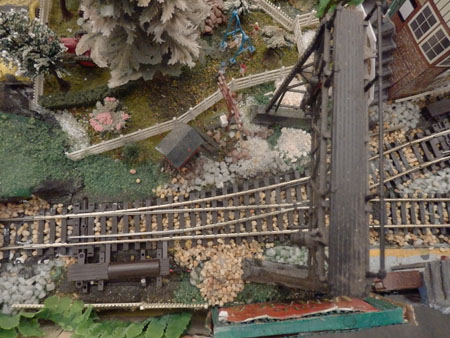
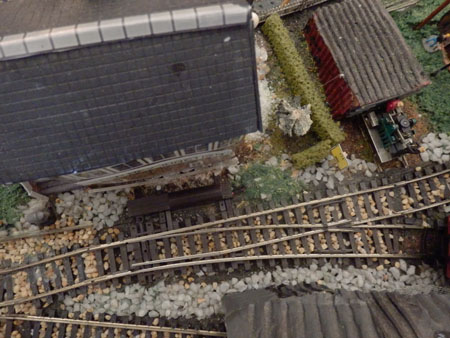
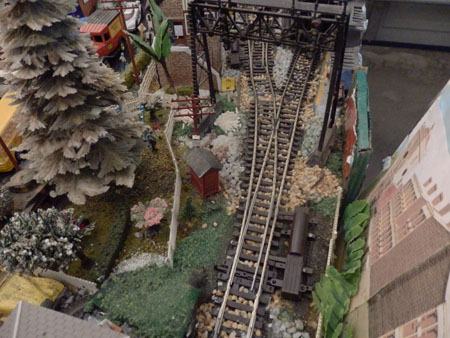
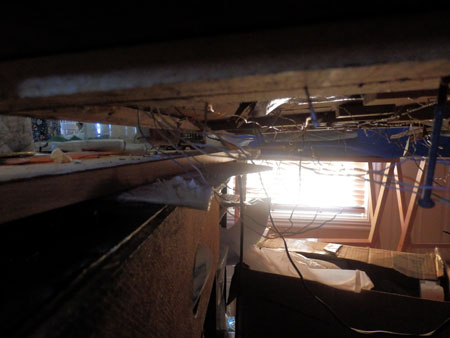
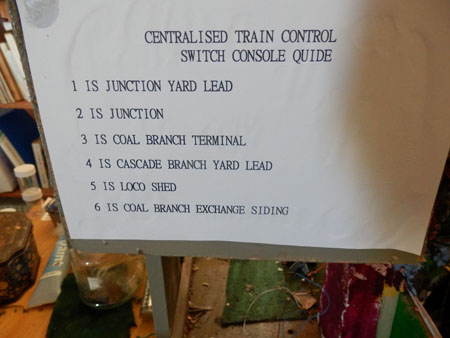
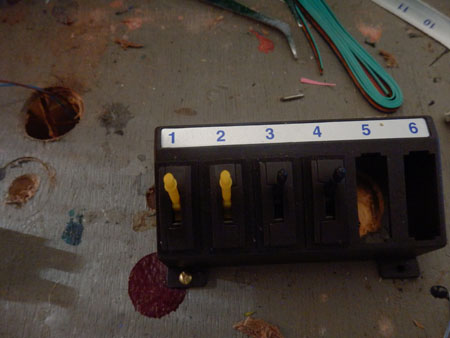
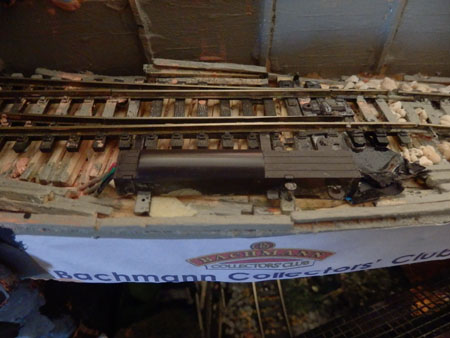



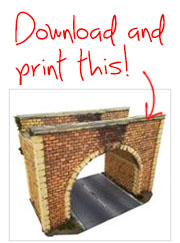
I use the Peco side mounted as well , but find sometimes can be a bit slow at opening and closing Peco Points , yet the Hornby points, no problem they are a lot slacker .
Good tip for the plastic bottles & scenic materials, we never stop learning ! D/
Unfortunately PECO point motors especially the surface mounted ones and their switches are not renowned for lastin very long in use, we have had many failures in the past and will not now use them, there are many better alternatives available!!
VERY SMOOTH LAYOUT
With regards to the Peco CDU try increasing the size of the capacitor to possibly double what you have at present, I use 50v 4700up ( micro farrad ) in mine, and the point blades snap across sharply.
Here is an idea that I thought of for those who scratch build their own buildings.
You know the stiff cellophane that is used to wrap food stuffs like microwave pop corn would make cheap windowpanes for buildings. I came up with this idea when I had a model that did not have enough clear plastic window pieces.
You will need:
Your model walls without the clear plastic parts installed.
Large piece of stiff cellophane like what is used to wrap prepackaged food stuffs in.
Glue (like super glue).
Before assembling your walls into completed structures:
Step 1) Lay your walls on your clean work area with the inside wall surfaces facing upward.
Step 2) With your glue, (like super glue) Put a small drop on one inside corner and place a corner of your cellophane on the glue and hold until it is firmly secured and the glue is cured.
Step 3) Do the same to an adjacent corner by gently stretching and holding the cellophane in place until the glue cures.
Step 4) Repeat steps 2 and 3 for the other corners.
If you are covering a large area, what you want to do then is to secure a few places within the area of the four main corners.
Step 5) Locate spaces between window openings with open area, (to allow for capillary action).
Step 6) Poke a small hole in the cellophane with a straight pin or needle, in an open area between window openings.
Step 7) Put a small drop of your super glue in the pin hole and allow the glue to spread by capillary action. Remember to use a small drop. You don’t want the glue to spread too much. Either gently press the cellophane into the glue and hold until it cures, or use a light weight over the glue spot.
Step 8) After the glue is fully dried, you can then assemble your structure. Be careful not to get glue on your windows.
By gluing the areas within the four main corners, you will not see a noticeable flutter of the cellophane when a train rolls by.
Well, there is my tip for the day.
Happy modeling.
Toni
THANKs for your kind comments.
Don’t use Atlas points on a siding if you intend to store locos on it, as they are live to every part of the point no matter what track the point is set for.
Thanks Al for showing my Handiwork
in the lastest video, #5 I think it is where you are using an “electric spreader” to lay down the grass, the same one that you showed your house lighting, why is none of your track “super elevated” at the “outside rails ? Your videos are pretty good and with our compliments to both you and Alistaire keep them coming. I need to rewatch that video with the sound on, maybe there is something I missed. If you are interested in viewing pictures of my “LZPMRR” in Z scale go to zcentralstation and go to gallery, it will step you thru it to the pictures posted of my Z scale model railroad. You may leave comments whether good or bad about it.
Has ony one thought about usung a digital postal scales internals for a
car weighing machine. I am thinking about it.
george
In England at this time of year, the faded flower heads from buddleia bushes, sprayed green make good tall pointed conifers.
Please post a picture of the budelia bush / conifer trees. Good idea, D/
Would have been fun to see a photo the “screen door” fence. It is always interesting to see some of these wonderful ideas accompanied with pictures.
Adding to the cellophane window suggestion. Once dry and before assembly you can paint curtains on the inside. Practice on other cellophane before you do it on the building experiment to get the paint consistency correct. Brush strokes look like pleats in the curtains, a nice effect.
Add to the cellophane window suggestion.
Superglue dries until it is brittle, when it can break easily allowing the cellophane to float free. There are other glues (like UHU) that do not dry to a brittle state, and so will keep your windows glazed.
My suggestion to install curtains on the Windows, which have been explained above:-
Translucent butter paper be fan folded and cut to the size(little extra) and pasted top part to the top frame of the Windows, from inside the house. When lights are on in the house, it gives excellent view of the curtained Windows from out side. Try it yourself and see the view !
GOPAL DAGA/ INDIA
excellent